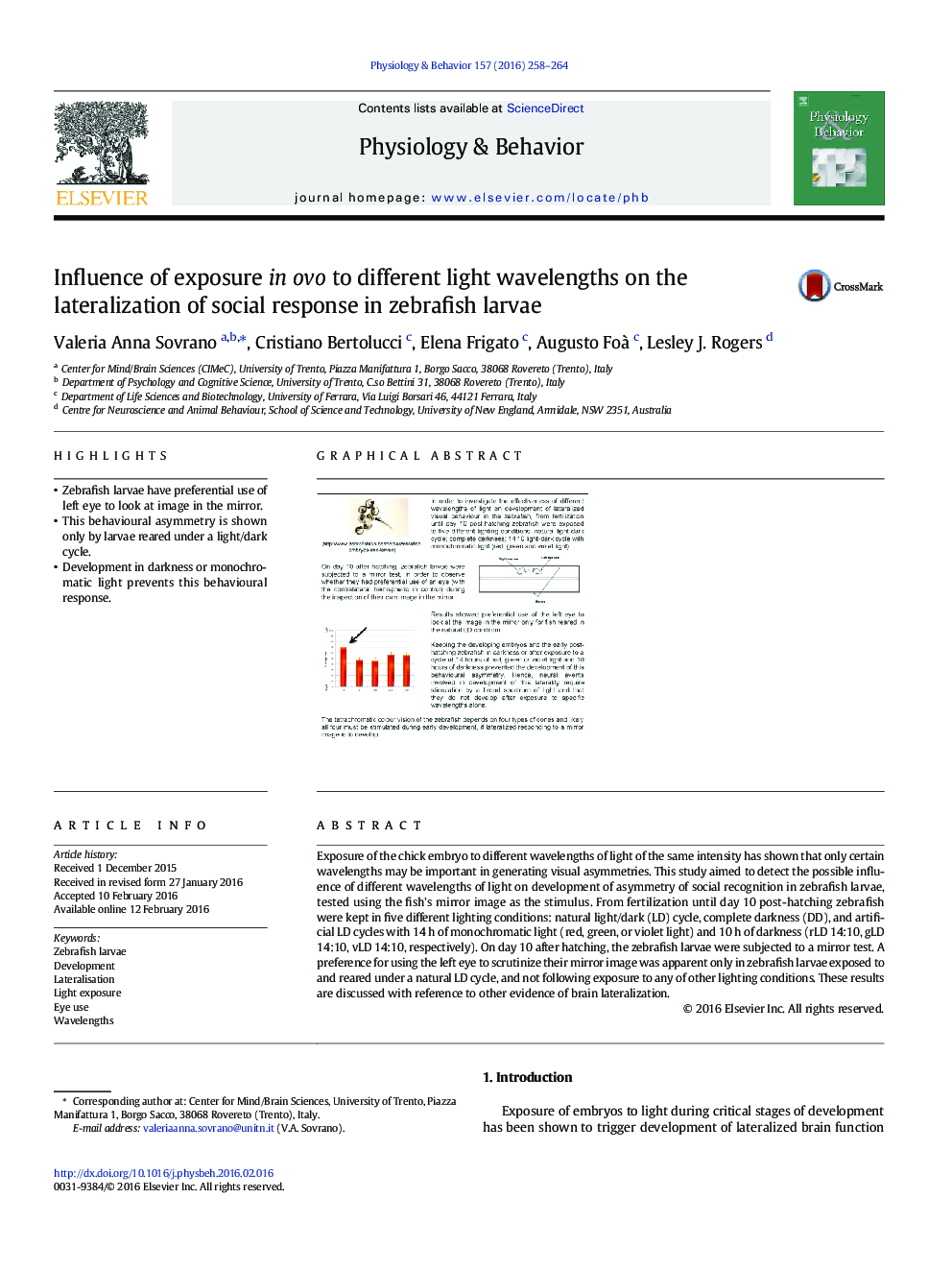| Article ID | Journal | Published Year | Pages | File Type |
|---|---|---|---|---|
| 2844029 | Physiology & Behavior | 2016 | 7 Pages |
•Zebrafish larvae have preferential use of left eye to look at image in the mirror.•This behavioural asymmetry is shown only by larvae reared under a light/dark cycle.•Development in darkness or monochromatic light prevents this behavioural response.
Exposure of the chick embryo to different wavelengths of light of the same intensity has shown that only certain wavelengths may be important in generating visual asymmetries. This study aimed to detect the possible influence of different wavelengths of light on development of asymmetry of social recognition in zebrafish larvae, tested using the fish's mirror image as the stimulus. From fertilization until day 10 post-hatching zebrafish were kept in five different lighting conditions: natural light/dark (LD) cycle, complete darkness (DD), and artificial LD cycles with 14 h of monochromatic light (red, green, or violet light) and 10 h of darkness (rLD 14:10, gLD 14:10, vLD 14:10, respectively). On day 10 after hatching, the zebrafish larvae were subjected to a mirror test. A preference for using the left eye to scrutinize their mirror image was apparent only in zebrafish larvae exposed to and reared under a natural LD cycle, and not following exposure to any of other lighting conditions. These results are discussed with reference to other evidence of brain lateralization.
Graphical abstractFigure optionsDownload full-size imageDownload as PowerPoint slide
